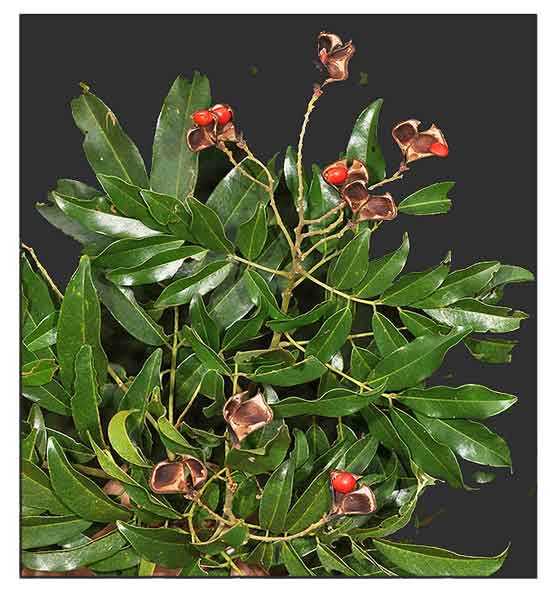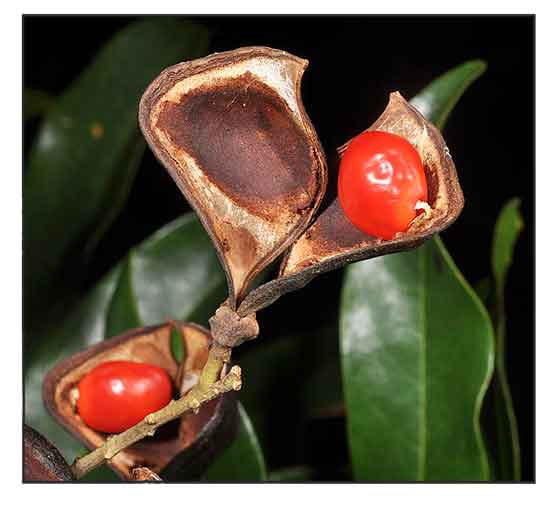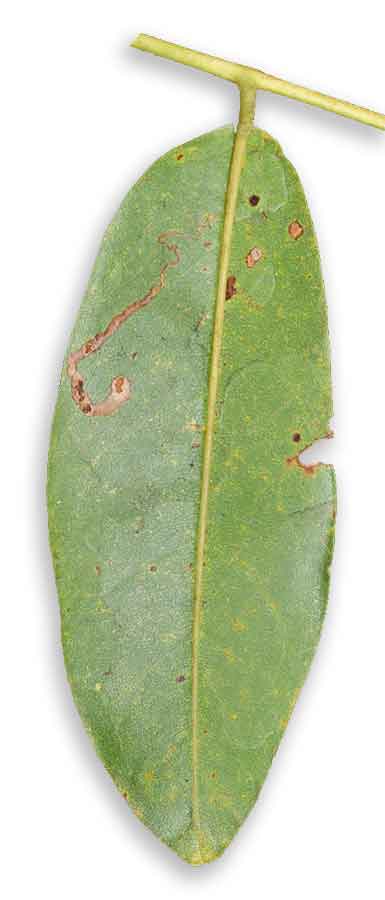
Family • Fabaceae
Bahai
Ormosia calavensis Azaola
HORSE-EYE BEANS
| Scientific names | Common names |
| Ormosia calavensis Azaola | Bahai (Tagalog) |
| Pongamia corollaria Miq. | Bangate (Tag.?) |
| Magallayaw (Ifugao) | |
| Tindalog-aso (Tag.) | |
| Horse-eye beans (Engl.) | |
| Ormosia calavensis is an accepted species. KEW: Plants of the World Online | |
| First published in F.M.Blanco, Fl. Filip., ed. 2.: 230 (1845) | |
September 2023
![]()
 |
| PHOTOS / ILLUSTRATIONS |
| IMAGE SOURCE: Photo / Fabaceae : Ormosia calavensis / Fruiting twig / Copyright © 2016 by P B Pelser & J F Barcelona (contact: pieter.pelser@canterbury.ac.nz) [ref. DOL110561 / Non-Commercial Use / click on image or link to go to source page / Phytoimages.siu.edu |
| OTHER IMAGE SOURCE: Photo / Fabaceae : Ormosia calavensis / det. by Elmo Bado / Fruit / Copyright © 2016 by P B Pelser & J F Barcelona (contact: pieter.pelser@canterbury.ac.nz) [ref. DOL110495] / Non-Commercial Use / click on image or link to go to source page / Phytoimages.siu.edu |
| OTHER IMAGE SOURCE: Photo / Fabaceae : Ormosia calavensis / det. by Kenneth Bornias & Pat Malabrigo / Abaxial surface of leaf / Copyright © 2011 by P B Pelser & J F Barcelona (contact: pieter.pelser@canterbury.ac.nz) [ref. DOL38397] / Non-Commercial Use / image modified / click on image or link to go to source page / Phytoimages.siu.edu |
Additional
Sources and Suggested Readings |
• |
DOI: It is not uncommon for links on studies/sources to change. Copying and pasting the information on the search window or using the DOI (if available) will often redirect to the new link page. (Citing and Using a (DOI) Digital Object Identifier) |
| List of Understudied Philippine Medicinal Plants |
| New plant names needed The compilation now numbers over 1,300 medicinal plants. I believe there are hundreds more that can be added to the collection. The last 100 plants came with great difficulty, many by happenstance, some by suggestion of site visitors. The basic information needed are the local plant name (if known), any known folkloric medicinal use, scientific name (most helpful), and, if possible, a photo. Your help will be greatly appreciated. |
• |
 |


 Distribution
Distribution
